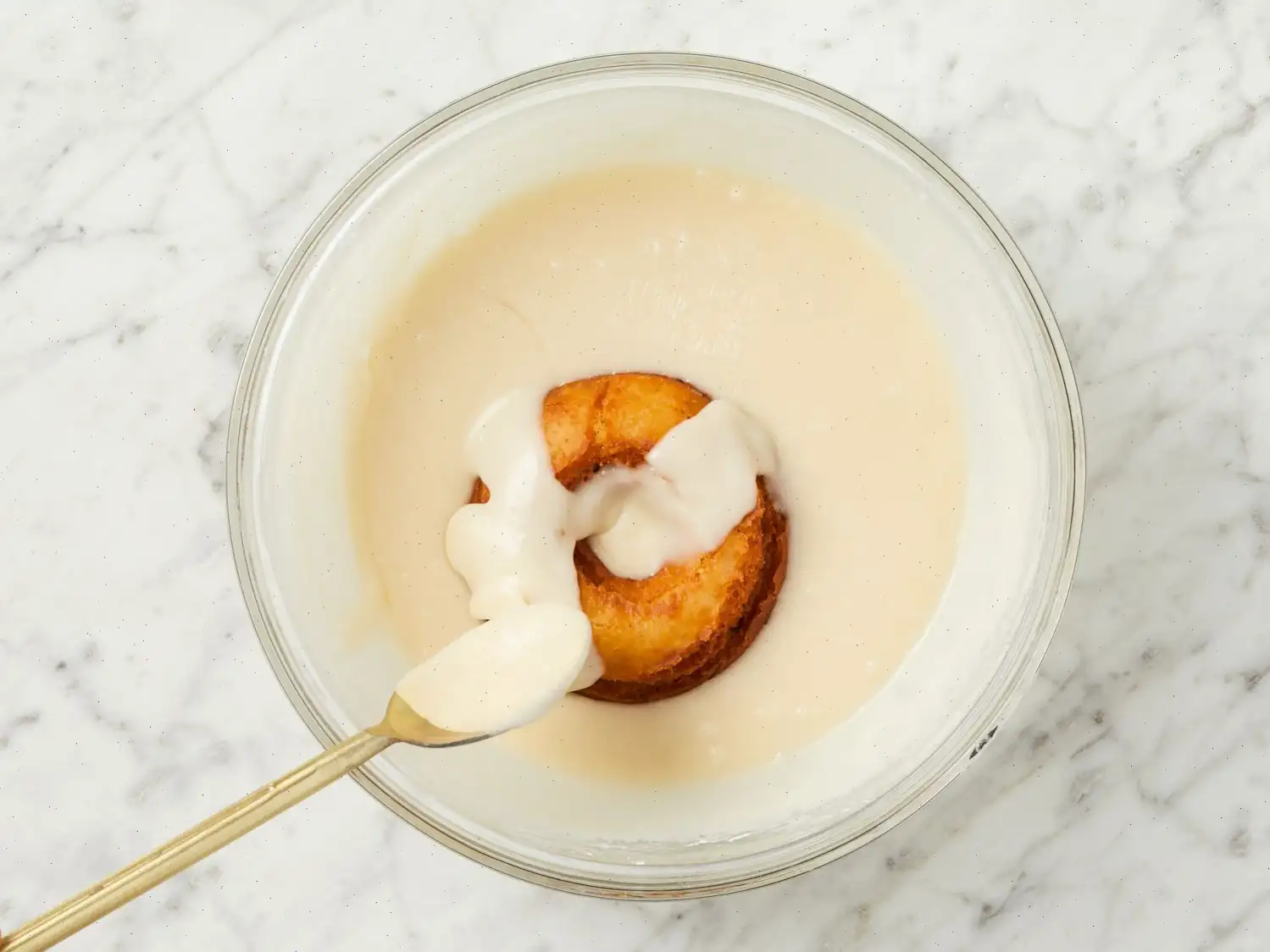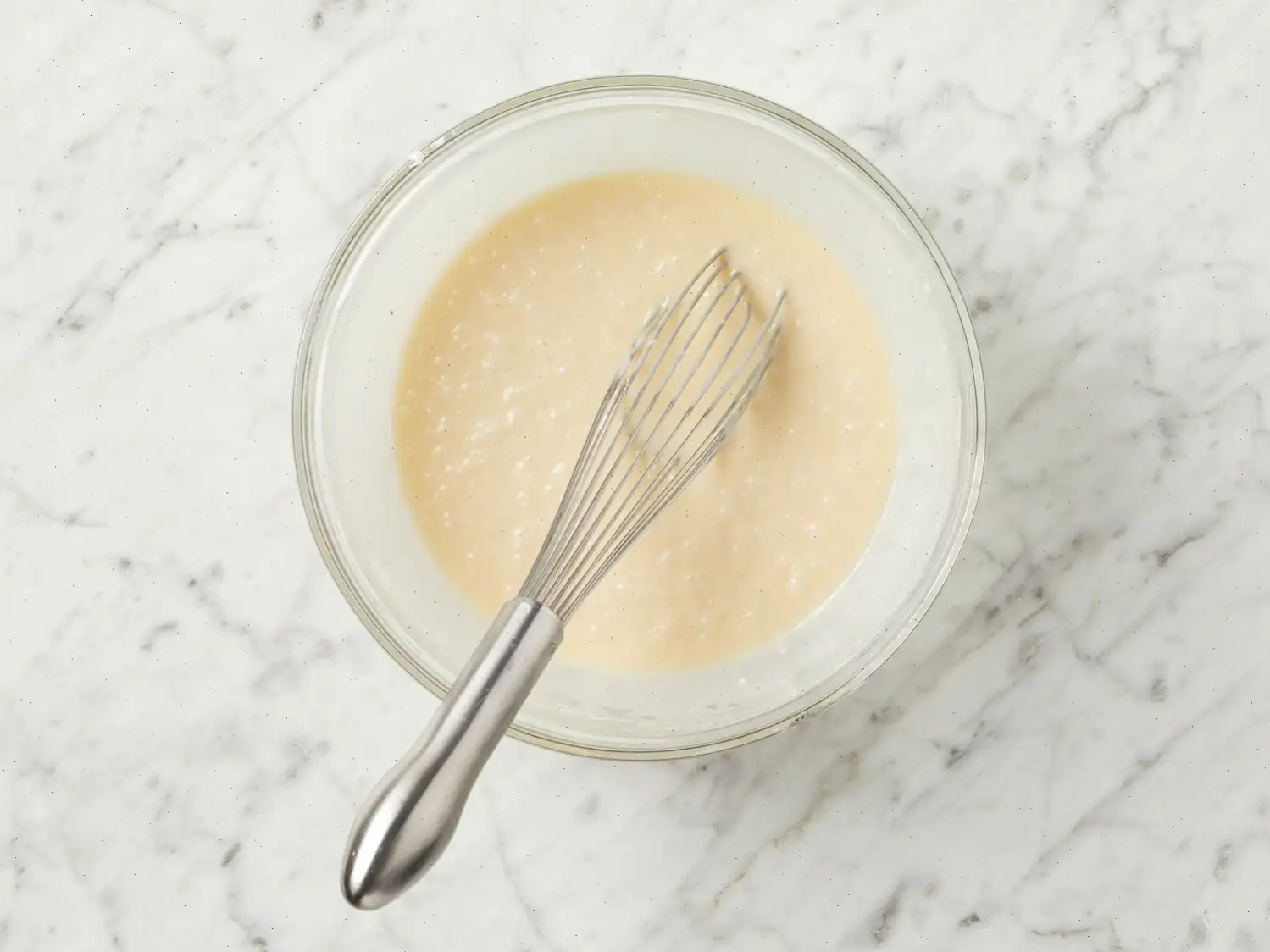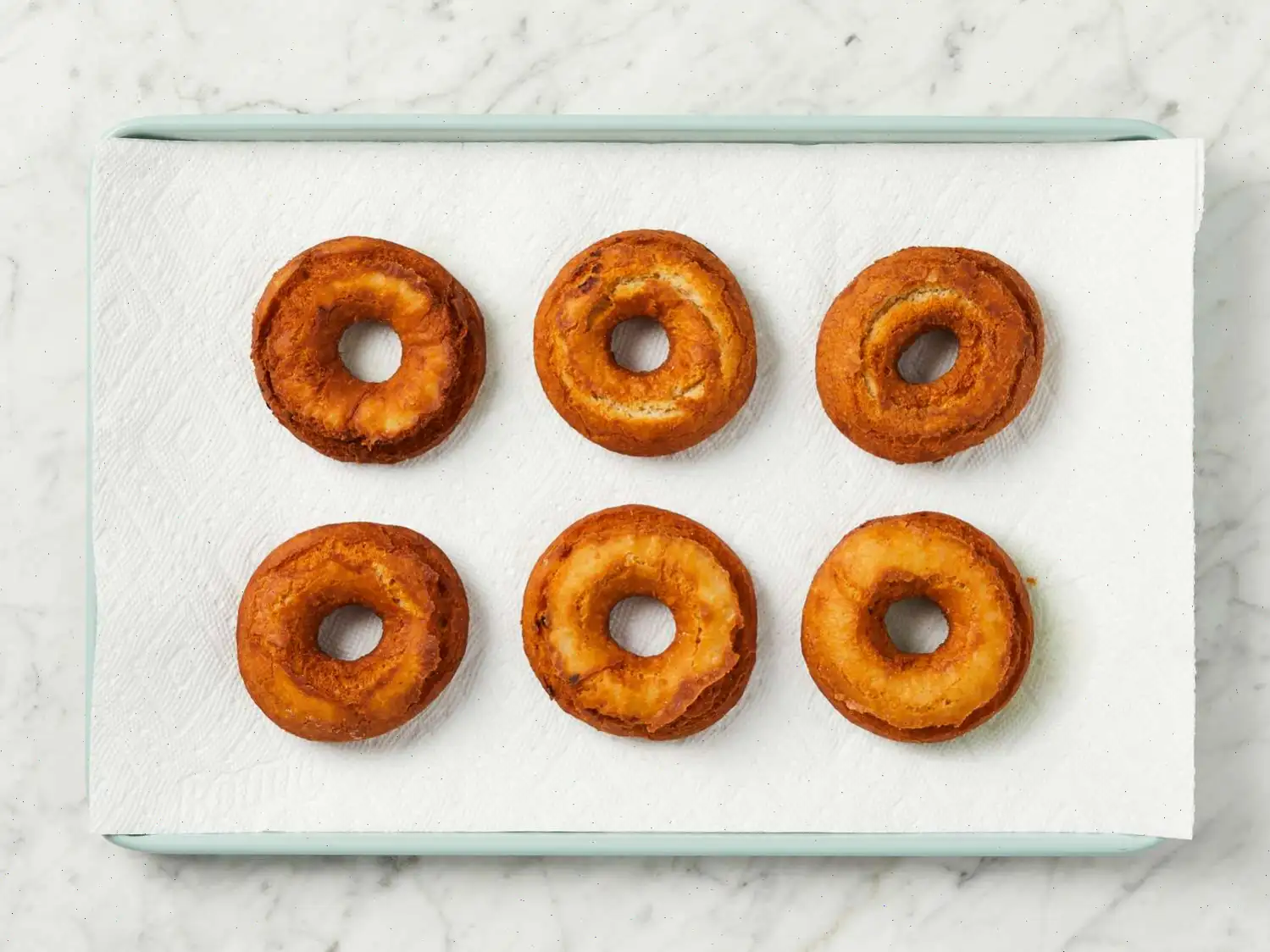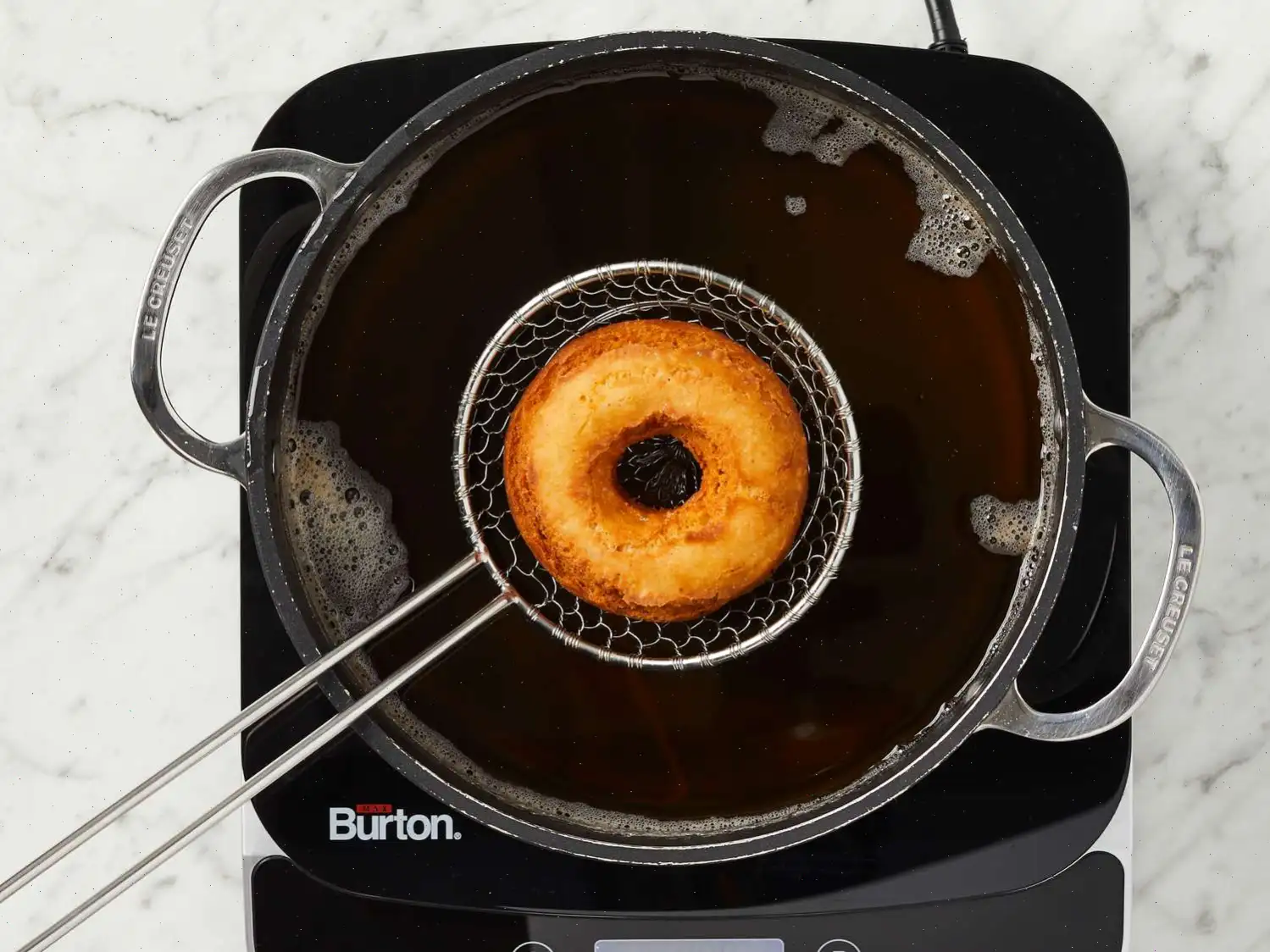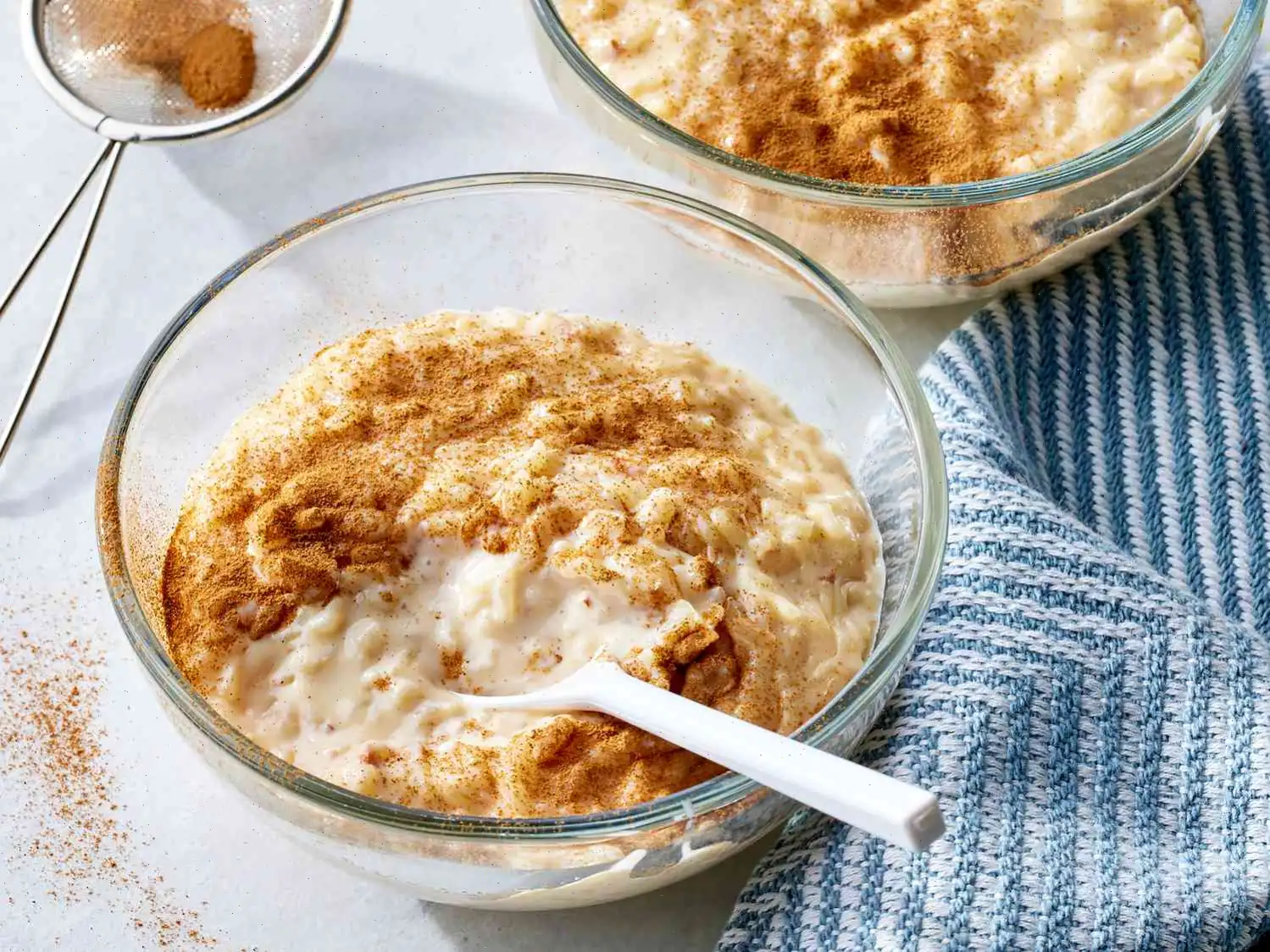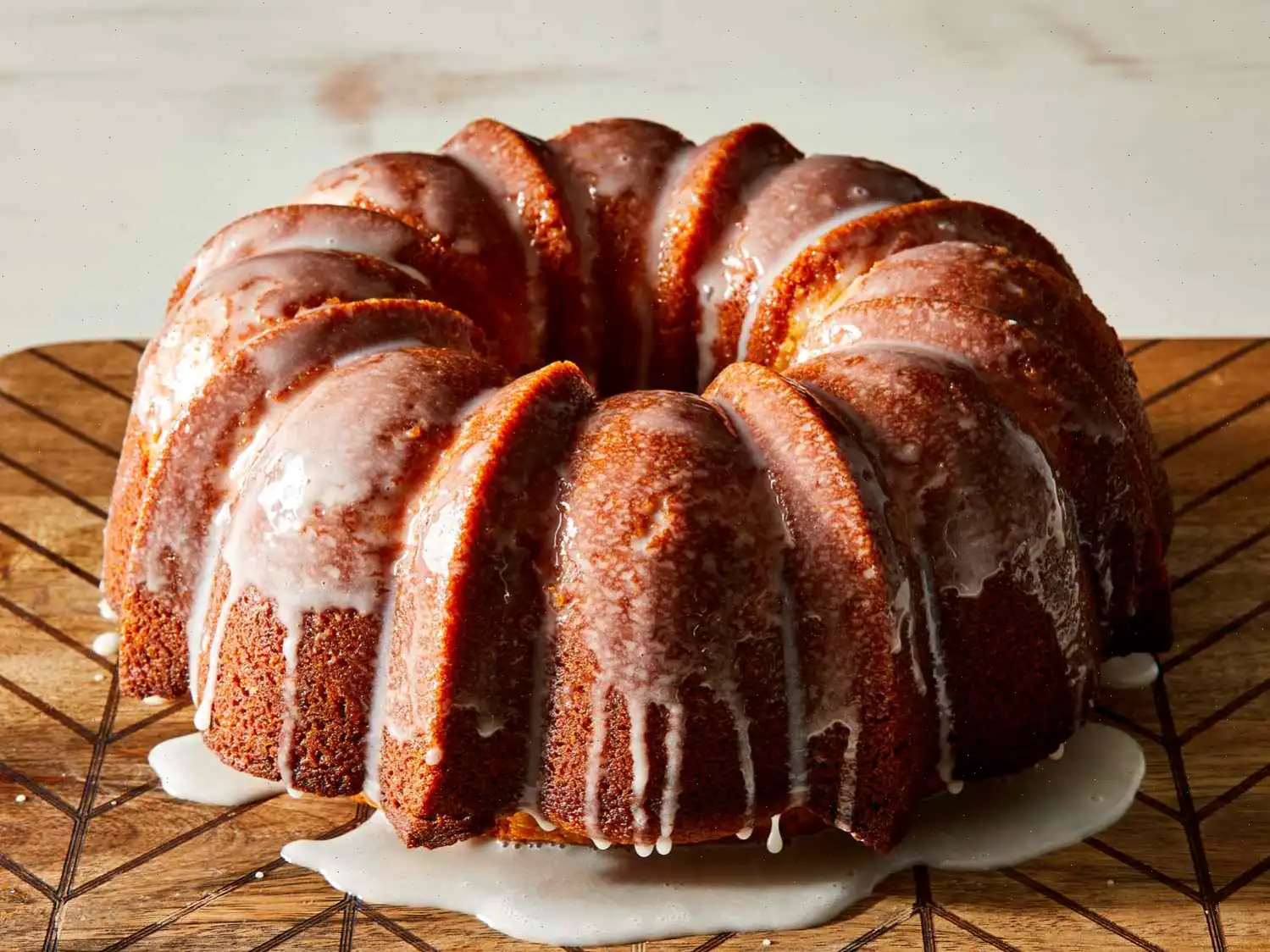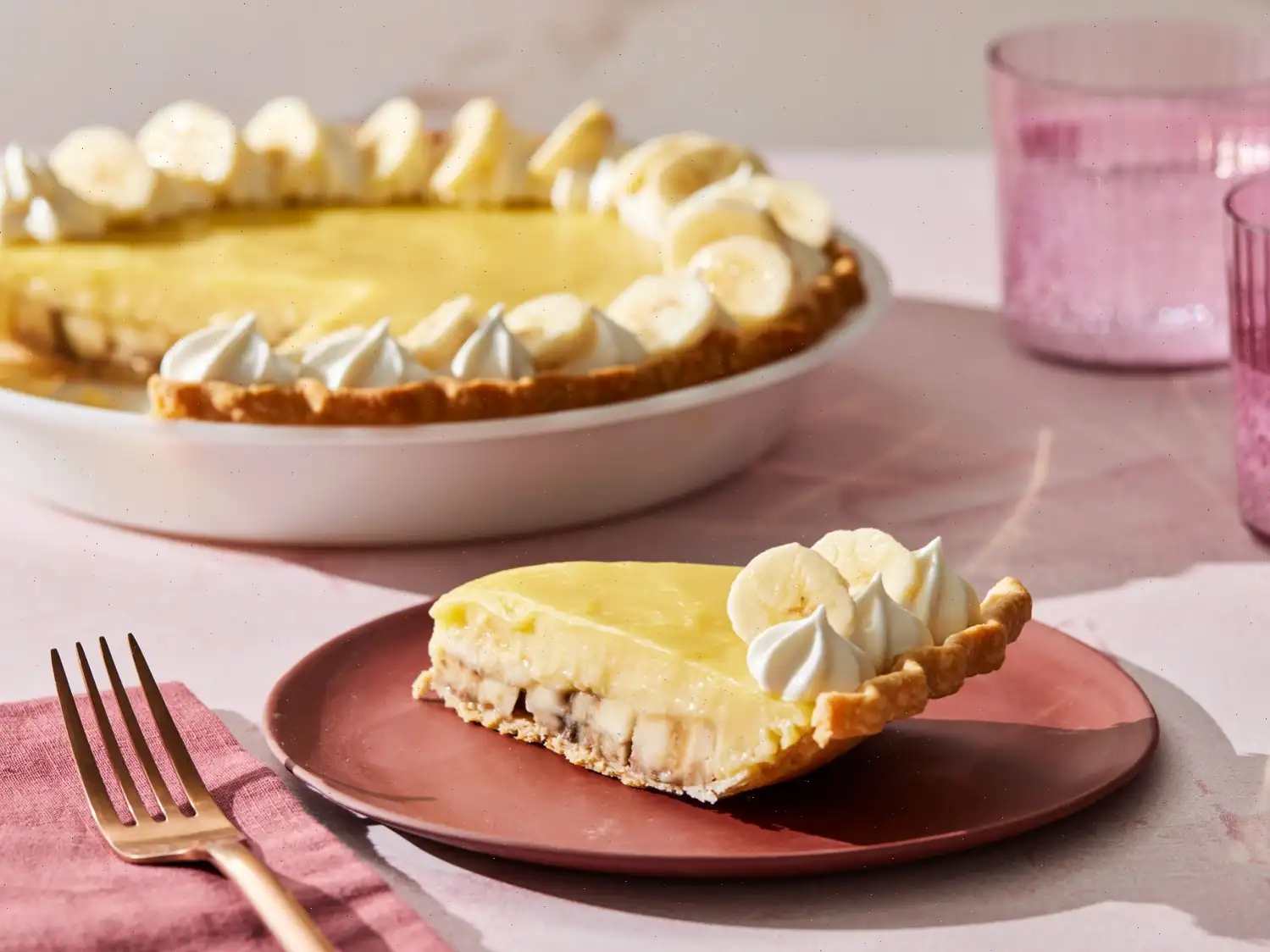
Sour Cream Donuts Recipe
Yield: 8 servings
Ingredients
- 2 cups bleached cake flour (such as Swans Down), plus more as needed
- 2 teaspoons baking powder
- teaspoon kosher salt
- teaspoon ground nutmeg
- teaspoon ground cinnamon
- cup sour cream, room temperature
- cup granulated sugar
- 2 large egg yolks, room temperature
- 1 tablespoon unsalted butter, melted and cooled slightly
- 1 tablespoon vegetable oil
- 1 teaspoon vanilla extract
- Vegetable oil, as needed for frying
Glaze
- 4 cups powdered sugar
- cup unsalted butter, melted
- 6 tablespoons hot water
- 1 teaspoons light corn syrup
- teaspoon kosher salt
- teaspoon vanilla extract
Directions
- In a bowl, whisk together the cake flour, baking powder, salt, nutmeg, and cinnamon until well combined.
- In a separate large bowl, whisk the sour cream, granulated sugar, egg yolks, melted butter, vegetable oil, and vanilla extract until smooth and combined.
- Gradually fold the flour mixture into the sour cream mixture until just combined. The dough will be soft and sticky.
- Cover the bowl with plastic wrap and refrigerate for about 2 hours, or until the dough firms up slightly.
- Once chilled, turn the dough out onto a heavily floured surface. Pat or roll it out to a thickness of 3/8 to inch. Flour your hands or rolling pin as needed.
- Using a floured 3 -inch round cutter, cut out donut shapes. Then, use a floured 1 -inch round cutter to cut holes in the center of each dough circle.
- Transfer the dough rings to a parchment-lined baking sheet. Gather the dough scraps, reroll, and continue cutting out donuts until all dough is used.
- In a large Dutch oven, heat 3 inches of vegetable oil over medium heat. Use a deep-fry thermometer to ensure the oil reaches 360F to 365F (182C to 185C).
- Carefully fry 1 to 2 donuts at a time, cooking until golden brown and cooked through, about 1 to 1 minutes per side. Adjust the heat as necessary to maintain the oil temperature.
- Using a spider strainer, transfer the donuts to a baking sheet lined with paper towels. Let them drain and cool for 5 minutes.
- While the donuts are cooling, prepare the glaze. In a large bowl, whisk together powdered sugar, melted butter, hot water, corn syrup, salt, and vanilla extract until smooth and well combined.
- Once the donuts have cooled slightly, dip each warm donut into the glaze, craggy side up. Use a spoon to fully coat the donut in the glaze.
- Remove the donut from the glaze using two forks placed underneath. Allow any excess glaze to drip off before transferring the donut to a wire rack set over a rimmed baking sheet. Repeat with the remaining donuts.
- Allow the donuts to stand until the glaze sets, about 25 minutes, before serving.
Cook's Note: For an almost translucent glazed look, coat the donuts while they are still warm, about 5 minutes after cooling. You can work in batches, glazing the donuts as they are fried or cooling.
Donuts are best enjoyed the same day. Leftovers can be stored in an airtight at room temperature for up to 2 days.
Nutrition Facts (per serving)
- Calories: 643
- Total Fat: 22g (28% Daily Value)
- Saturated Fat: 11g (55% Daily Value)
- Cholesterol: 115mg (38% Daily Value)
- Sodium: 309mg (13% Daily Value)
- Total Carbohydrate: 107g (39% Daily Value)
- Dietary Fiber: 1g (3% Daily Value)
- Total Sugars: 75g
- Protein: 6g (11% Daily Value)
- Calcium: 108mg (8% Daily Value)
- Iron: 3mg (18% Daily Value)
- Potassium: 92mg (2% Daily Value)
* Percent Daily Values are based on a 2,000 calorie diet. Your daily values may be higher or lower depending on your calorie needs.
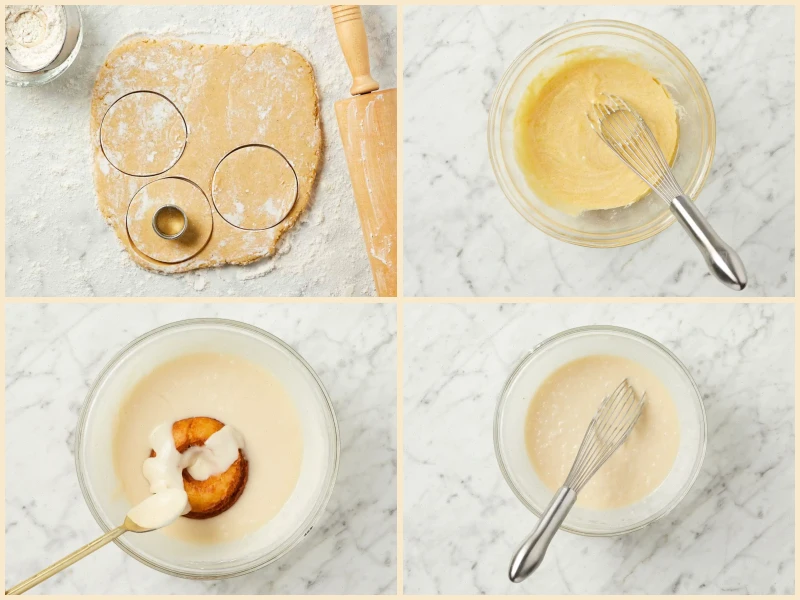
Origin and History:
The classic sour cream donut is an American favorite, popular for its tender texture and slightly tangy flavor, which comes from the addition of sour cream in the dough. The origins of the sour cream donut are often linked to the American South, where the practice of frying donuts dates back to the early 19th century. However, it became widely known and appreciated in the early 20th century with the boom of donut shops in cities across the United States. The inclusion of sour cream in the dough is thought to have been a way to enhance both the richness and the texture of the donuts, making them softer and fluffier than their traditional counterparts.
Regional Variations:
While sour cream donuts are loved nationwide, regional variations exist. In the Midwest, particularly in states like Michigan and Ohio, sour cream donuts are a staple in local bakeries. They are sometimes made with a touch of nutmeg or cinnamon for an extra flavor boost. In contrast, in the southern United States, the donut may be served with a slightly sweeter glaze, reflecting the region's love for sugary treats. These donuts can also be found in some small-town diners, where they are a nostalgic part of the local breakfast menu.
What Makes Them Different:
What sets sour cream donuts apart from other donuts, such as the traditional yeast donut or cake donut, is their distinctive texture. Yeast donuts rely on yeast to rise, creating a lighter and airier texture, while cake donuts are made with a baking powder or baking soda leavening agent, making them denser. Sour cream donuts, however, strike a balance between the two, offering a slightly thicker dough with a soft, moist crumb thanks to the sour cream. The tangy flavor from the sour cream also provides a pleasant contrast to the sweetness of the glaze, which is not as overpowering as some other donut varieties.
Where Are They Served?
Sour cream donuts are often found in classic American diners, small-town bakeries, and even in chain donut shops that cater to the nostalgia of homemade baked goods. They are especially popular for breakfast or as a midday treat with a cup of coffee. In fact, they are a common feature of morning bakery displays, where their golden-brown exterior and glossy glaze tempt customers to grab one (or two!) for a sweet start to their day. The donuts are also popular at family gatherings, church events, and bake sales due to their ease of preparation and mass appeal.
Fun Facts:
Did you know that sour cream, often considered an unlikely ingredient in desserts, has been used in baking for centuries? It was once regarded as a luxurious ingredient due to its rich, creamy texture, and it adds a moisture that can't quite be replicated by other dairy products. Some bakers even say that the tangy flavor of sour cream makes donuts stay fresh longer, which is why they remain a favorite for both home bakers and professional pastry chefs alike. Another interesting fact is that these donuts are a versatile treat: if you're feeling creative, you can switch up the glaze to suit your tastewhether thats a chocolate glaze, maple syrup coating, or even a dusting of powdered sugar for a more rustic look.
In addition, sour cream donuts were once a popular choice at fairs and carnivals across the United States. Their ability to hold up well under the hot temperatures of outdoor events and their satisfying sweetness made them a perfect snack for people on the go. Today, sour cream donuts continue to be a part of the American culinary tradition, celebrated for their delicious, nostalgic taste and texture.
FAQ about Sour Cream Donuts Recipe
Comments
William Parker
02/12/2024 11:06:01 PM
Excellent donut! The glaze was tasty, although I personally enjoy a more basic glaze.




